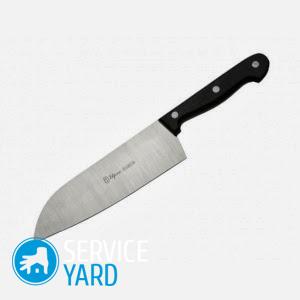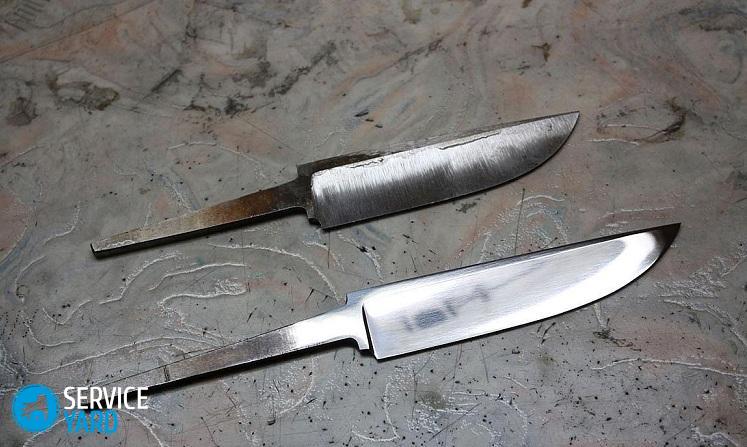Which steel is best for a knife?

Every day in everyday life and in various sectors of activity, we are faced with the need to cut products and items. And in this constant assistant is the knife. But much depends on how convenient and practical it is for one or another purpose. First of all - speed and accuracy, safety of the planned work. The main indicator of the quality of such tools is steel. And what steel they are made of, and what steel is better for a knife? Are there many differences between kitchen and hunting knives? You can learn all this in this article.
to contents ↑The choice of the blade - what to focus on?
Attention should be paid to the characteristics of the blade in order to understand which knife will be of good quality:
- Hardness. An indicator of the ability to withstand mechanical influences of various kinds.
- Wear resistance. How long can steel wear during operation.
- Strength. It shows how much the product is able to withstand cracks, chips, which can be caused by severe loads.
- Resistance to rust. The ability to resist corrosion.
- Another criterion is the ability of the knife to hold sharpening.
Important! The most important problem in the manufacture of blades is the balance of strength and strength of the material. The hardest steel can fly apart when dropped from a height. Or the blade may bend from side to side without breaking at the same time, but you will be forced to sharpen such a blade daily.
Therefore, unequivocally to the question of which steel is better for a knife, you will not find the answer - you need to choose a knife based on its purpose.
to contents ↑What steel do knives make of?
We will talk about the most popular models and give them some characteristics to figure out which steel is best for a knife.
Premium segment:
- M390. The chromium and vanadium content make this stainless steel very resistant to wear and corrosion. Steel perfectly grinds, holds grinding for a very long time. It is considered one of the best steels for making knives. It goes to the people thanks to the company Benchmade Barrage, which produces some of the most inexpensive knives with good steel. Other manufacturers are also beginning to actively use this steel.
- ZDP-189. Plastic, but at the same time hard steel from Japan. It is easily polished, cuts perfectly. Unfortunately, it is famous for its fragility.
- CPM S35VN. Just good steel, capable of holding sharpening for a long time.
- CPM S30V. It is universally recognized as the TOP among steels with the observed balance of strength and hardness.
- Elmax. Resistant to premature wear, corrosion European steel.
- BG-42. No worse than the previous and next models, except for sharpening properties.
- 154CM. Solid and stainless material from America.
- ATS-34. High Japanese quality in all respects. The disadvantage is poor rust resistance.
- D-2. It has the same problem as the previous material.
- VG-10. A great choice if you close your eyes to strength.
Upper Intermediate Level:
- 440C. The best steel for a knife today in its price category.
- AUS-8. It is very easy to sharpen, but it is not so easy to hold this sharpening.
- 8Cr13MoV. Good Chinese steel for its price range.
- 14C28N (Sandvik). It is widely used in Scandinavian knives, nothing bad can be said about this material, but there are no distinctive good properties either.
Lower middle level:
- 420HC.It does not shine very much with advantages, but all eminent manufacturers squeeze everything out of this steel with the help of heat treatment. And they cope.
- 440A. Similar to 440HC, but more corrosion resistant.
Lower level:
- 420. Knives made of such steel will not last long, but the ridiculous price makes their use very wide.
- AUS-6. It does not shine with high quality, but it is also quite common in the market.
- Damascus steel. It is famous mainly for its beauty and is popular among collectors.
Manufacturing Features
Forging blades - the oldest metal processing operation. In the process, it is necessary to make a blade, while maintaining the most favorable microstructure of the material.
For the workpiece, steel strips are used, preferably hot rolled, because the metal is more ductile and can be easily forged. Dross is easily beaten by hammer blows, and does not adversely affect the forging of the material.
Important! The length of the blanks into which the strip is divided is calculated by calculation, and depends on the requirements for the characteristics of the knife itself. Strength is directly proportional to the length of the workpiece.
 Cut metal through a wide variety of technical solutions:
Cut metal through a wide variety of technical solutions:
- Mechanical cutting is accompanied by a large consumption of metal. With this method, the strength drops.
- Cutting with the help of forging tools will not affect the initial parameters of the steel, but it will not differ with particular accuracy.
- Cutting with shears is the most modern and best way.
Important! By multiple “runs” it is necessary to achieve a fine-grained structure.
Edging of the edges is carried out after the forging process and is carried out with the cooled material, because of which more efforts should be applied.
to contents ↑Hunter knives
What steel is better to buy a knife for hunting? Hunting knives are usually made of steel with a very high carbon content, the amount of which determines the hardness of the blade.
Hardness is measured using the Rockwell scale, where the units are HRC. The increase in hardness is accompanied by an increase in the period of preservation of sharpness.
Important! The amount of carbon is always illustrated on the labeling of the material of manufacture. For example: “440B” - 0.9 percent carbon, “440A” - 0.75%, “420” - 0.6% carbon.
Most often, hunting knives are made of steel called 440C, which is famous for its elasticity, although it loses in hardness. Chrome and molybdenum in its composition make the material “stainless”. Such steel is easily sharpened and retains its sharpness for a very long time.
to contents ↑Important! There is an alternative to the above steel - CPM440V. It holds sharpening much longer and is several times more resistant to wear.
What are the features of operation?
The durability of the knife is built on the contradictions of the requirements that the knife must meet:
- Blades must have high hardness, even at the largest temperature differences. This requirement is due to the fact that the knife can heat up sharply from friction during its operation.
- The longitudinal bend must have increased stability, especially if the blade is narrow and long.
- Have minimal deformation of the blade during use.
- High strength. The lower the strength, the faster the knife will blunt.
- The blade should be easy to sharpen and hold sharp for a long time.
- Resilience in critical situations. Satisfying this requirement is a safety measure for the owner and others.
It is impossible to satisfy all the requirements, therefore, manufacturers take into account all factors during production and try to find the perfect compromise.
to contents ↑Stock footage
When choosing a knife, consider your requirements and prioritize. This approach will help you find the most ideal option.
- How to choose a vacuum cleaner taking into account the characteristics of the house and coatings?
- What to look for when choosing a water delivery
- How to quickly create comfort at home - tips for housewives
- How to choose the perfect TV - useful tips
- What to look for when choosing blinds
- What should be running shoes?
- What useful things can you buy in a hardware store
- Iphone 11 pro max review
- Than iPhone is better than Android smartphones



